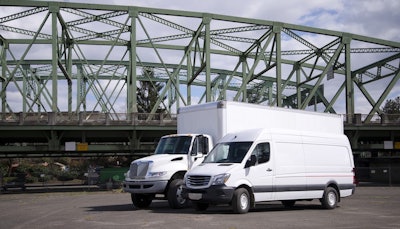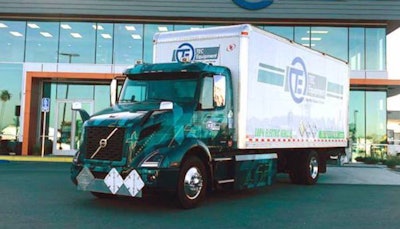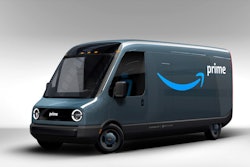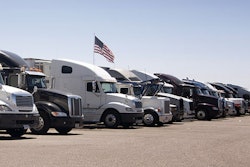
Early changes were nearly imperceptible. Average length of haul has been falling for decades; carriers knocking 200 miles off four-day runs were noticeable but hardly a cause for alarm. But in recent months, with coronavirus first shutting down the economy in March then persistently hanging around to ensure it couldn’t fully reopen during the summer, e-commerce’s impact on freight dynamics has become harder to miss.
For truck dealers, this poses an obvious and important question: If length of haul continues to fall while last-mile delivery grows, how is the industry’s need for equipment likely to change? Trucking has long been defined by the Class 8 sleeper. Will that still be the case in the years to come?
Many of North America’s largest carriers continue to make their mark with multi-state and national routes, but the share of those trips in the overall route market is contracting. According to the 2019 American Transportation Research Institute (ATRI) Operational Costs of Trucking report, the total number of commercial truck trips of 100 miles or fewer has grown by 7 percent from 2011 to 2018 and now represents 26 percent of all truck trips. Joined by a 1 percent uptick for regional hauls of 100 to 500 miles, ATRI says routes of fewer than 500 miles now represent 63 percent of all truck trips.
Average length of haul has fallen in kind. American Truck Associations (ATA) pegged the average haul at 527 miles in 2017; it had been nearly 800 at the turn of the century.
Coupled with e-commerce’s COVID-enhanced boom — more than $82 billion was spent online in May, a 78 percent increase over 2019, reports the Adobe Digital Index — it appears last-mile delivery’s segment of the truck trip market will only continue to grow.
While no universal consensus exists, many within the dealer channel are optimistic e-commerce won’t so much topple longstanding industry norms as it will expand the scope of the equipment marketplace.
Over the last decade, heavy-duty truck sales have continued to climb. And in the medium-duty space sales aren’t just rising, they’re skyrocketing. After selling 93,619 Class 4-6 trucks in 2011, American Truck Dealers’ (ATD) members sold nearly 185,000 of the same three classes in 2019. That 96 percent growth rate dwarfed the 61 percent rise in Class 8 sales across the same period — though the Class 8 market still sold more units. But unlike the Class 8 market, which cyclically rose and fell throughout the decade, the Class 4-6 market saw sales volumes rise every year from 2010 to 2019.
That steady growth is part of the reason trucking chatter hasn’t coalesced around the expanding local and regional haul space like vehicle autonomy, alternative fuels, electric powertrains and other hot topics.
“It’s really been an evolutionary, not revolutionary, trend,” says Steve Bassett, ATD chairman and president, General Truck Sales. “We’ve been talking about average length of haul declining for more than 15 years but it’s been declining gradually. It hasn’t been an overnight shift.”
That isn’t to say the market hasn’t followed the evolution. Bassett says a single year-over-year sales comparison for most dealers might not indicate much of a change, but when comparing 2019 to 2015, 2010 or other historical markers, take rates for smaller tractors designed for regional applications are clearly on the rise.
“We had a conversation about this last week in our Muncie, [Ind.,] store. Historically, we sold many more sleepers than day cabs there but recently we’ve noticed we’re selling a lot more regional cabs. Customers are still ordering heavy-duty trucks, but they’re not just buying sleepers like they maybe did several years ago.”
The story is similar across the country at TEC Equipment.
“I definitely think fleets are starting to be more flexible and dynamic with their equipment choices,” says Chris Thompson, TEC Equipment NW regional sales manager. “We’ve seen our customers starting to invest in regional haul in a significant way — I think they’re recognizing the shift in the business.”
That change hasn’t been lost on the OEM community, either.
 Volvo Trucks delivered its first all-electric Volvo VNR model to TEC Equipment last month.
Volvo Trucks delivered its first all-electric Volvo VNR model to TEC Equipment last month.When Volvo Trucks North America launched its VNL and VNR tractors last decade, the company made sure the new models were released with day cab and mid-roof sleeper options to serve the growing regional trucking space, says Product Marketing Manager Chris Stadler. The VNR in particular was developed with the regional market in mind, he says, with a bumper to back of cab (BBC) length of 113 in. to make it easier to navigate in local markets and urban roadways.
As American cities continue to grow and more retailers turn to localized distribution center-based warehousing to ship products in the last mile, Stadler says Volvo “has to be prepared to have a product that can go into those areas and operate effectively.”
Adds Kelly Gedert, vice president, on-highway market development, Daimler Trucks North America, “If customers decide to shift to more of a hub-and-spoke system, where they aren’t running cross-country as much, but instead use multiple trucks to move freight from city to city, routes and hauls will most likely be done during the day — and drivers will be home at night — which may mean a shift to more day cabs and smaller sleepers.”
Yet for many dealers, serving those regional markets won’t be done with Class 7 or baby 8 tractors alone. E-commerce routes, in particular, demand even smaller equipment like medium-duty straight trucks and box trucks and delivery vans, says Steve Latin-Kasper, director, market data and research, NTEA — The Association for the Work Truck Industry.
Thompson says that’s why TEC Equipment is working to expand its medium-duty footprint with Hino and Isuzu. He says the company currently represents the brands at only a few locations but hopes to expand its coverage in the years to come.
 Amazon has ordered 100,000 electric vans from Rivian to serve its burgeoning last-mile delivery needs.
Amazon has ordered 100,000 electric vans from Rivian to serve its burgeoning last-mile delivery needs.“A lot of our customers are starting to understand how companies like Amazon, FedEx, UPS and others are changing the last-mile delivery game,” he says. “With more attention on two-day shipping, overnight shipping and getting products immediately, medium-duty trucks are going to be more and more prevalent in our industry.”
Shorter routes with more trucks returning to terminals could open the market to more electric equipment as well.
“This evolution may also be well-suited for electric vehicle adaptation and deployment as trucks will have the ability to recharge at their own station at the end of the day,” Gedert says.
Finally, Latin-Kasper says truck dealers also shouldn’t overlook the commercial van segment, which NTEA estimates will experience larger sales gains due to e-commerce than any other type of truck.
“For last-mile delivery fleets, the growth of e-commerce likely will increase demand for fuel-efficient vans with specialized shelving or other design attributes focused on driver ergonomics and efficiency, along with increasing overall vehicle productivity,” he says.
Bassett agrees, noting an explosion of transit vans into his market. “I wish I had that product line,” he says.
The good news for Bassett and his fellow ATD counterparts is the influx of commercial vans into the vehicle population to support regional and last-mile delivery does not appear likely to reduce trucking’s need for heavy equipment. If that were the case, sales of Class 7 and 8 tractors wouldn’t have doubled last decade. While it appears the regionalization of trucking might require fewer full-size sleepers, it’s also appears to require more of everything else.
“There’s still going to be demand for long haul,” Stadler says, but how freight is moved has unquestionably changed. “What’s happening in the final mile is not going to go away.”










